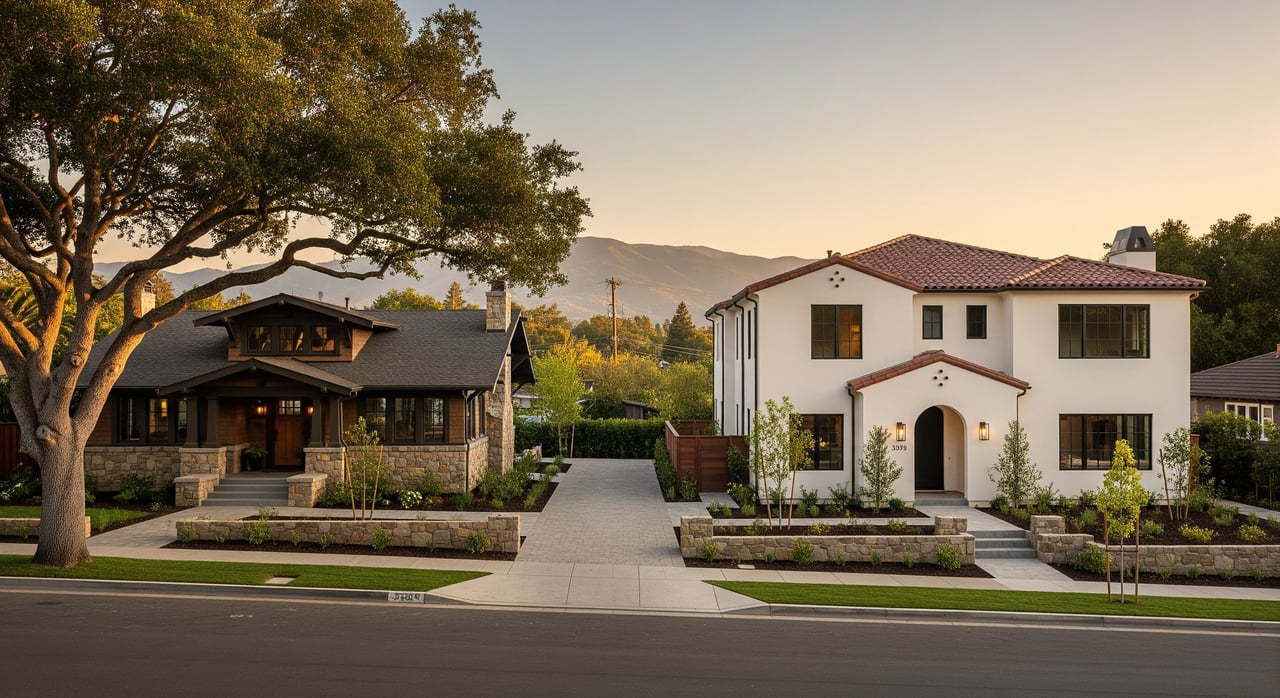The Bay Area housing market has surprised many this year with its strength, even in the face of “higher for longer” interest rates, declining consumer confidence, and a turbulent labor market. What exactly is keeping the market afloat? As reported in our Q3 2024 Market Update, sales volume (number of transactions), reached a 14 year low on a national level during the month of September. As we approach 2025, it’s essential to understand the forces at play and how they may impact the market in the coming year.
The Lock-In Effect: A Key Driver of Housing Supply Constraints
You have heard it from us many times before but the lock-in effect is a significant factor in today’s housing market. This phenomenon occurs when homeowners with historically low mortgage rates are reluctant to sell their homes, as buying a new property would likely mean taking on a mortgage at a much higher rate.
-
As of 2024, over 56% of U.S. mortgages have interest rates below 4%, many of which were secured during the pandemic when rates hit historic lows.
-
With current mortgage rates hovering around 6.79%, many homeowners prefer to stay put, drastically reducing the number of homes available for sale.
This reduced inventory intensifies competition among buyers, driving home prices up despite higher borrowing costs. A trend we will be watching closely in 2025 is whether the anticipated decrease in mortgage rates will be enough to motivate these sellers to make the move.
Demographic and Employment Trends Shaping Demand
Adding to the supply issue, millennials—the largest living generation—are now entering their prime household formation years. Their demand for housing is increasing just as inventory tightens. On the other side of the spectrum, baby boomers are working longer and staying in their homes longer, further limiting the availability of properties. While the average retirement age nationally is 62, in California the average age of retirement is 64. A recent Harvard Business Review article highlights the push for an older workforce. In the article titled “Redesigning Retirement,” Ken Dychtwald writes, “Altogether, more than 10 million Americans who are 65 or older are currently employed, and that number is projected to rise to nearly 15 million by 2032. Today 27% of Americans ages 65 to 74 work or are actively looking for jobs, up from 20% in 2002. And people who are 65 or older now represent the fastest-growing segment of the labor force—by far. It’s projected that by 2032 one in four U.S. workers will be 55 or older, and close to one out of every 10 will be 65 or older.” Below are the latest census statistics when it comes to age in the San Francisco Bay Area.
-
Under 18 years: Approximately 21% of the population
-
18 to 24 years: Around 9%
-
25 to 44 years: About 31%
-
45 to 64 years: Close to 26%
-
65 years and over: Nearly 13%
The Bay Area's high cost of living and thriving job market continue to keep the labor force actively engaged. Younger buyers, especially those in the tech sector, remain eager to enter the housing market despite affordability challenges. However, their demand is met with limited supply, as older homeowners are staying in their homes far longer than the national average. While the typical U.S. homeowner remains in their home for 12.8 years, in the San Francisco Bay Area, that average exceeds 17 years.
This dynamic pushes the milestone of homeownership to later in life. As of 2021, the average Californian becomes a homeowner at age 49, nearly a decade older than the national average of 38. These late-stage first-time buyers now represent a significant portion of the Bay Area’s market, reflecting the unique pressures of the region’s housing landscape.
The Great Wealth Transfer: A New Chapter in Housing
One significant trend to watch in coming years is the continuation of the Great Wealth Transfer. Over the next two decades, an estimated $84 trillion will transfer from baby boomers to millennials and Gen Xers, representing the largest generational wealth shift in history.
This wealth transfer is likely to have a profound impact on the housing market:
- Millennials will have more resources to purchase homes, pay off mortgages, or invest in real estate.
-
Inherited properties may come to market, helping to alleviate some of the inventory constraints.
-
Boomers downsizing or moving into retirement communities may create opportunities for younger buyers to acquire family-sized homes. However this Realtor.com article surveyed those resistant to moving and here’s what they said…
While the full effects of this wealth transfer are still unfolding, it offers a potential counterbalance to the lock-in effect, gradually increasing market fluidity.
2025 Housing Market Predictions: What Do the Experts Say?
Both the California Association of Realtors (C.A.R.) and the National Association of Realtors (NAR) are optimistic about 2025, especially with regards to transaction volume.
-
C.A.R. forecasts a 10.5% increase in California’s single-family home sales, reaching 304,400 units in 2025, building on the 6.8% increase seen in 2024.
-
NAR predicts a 9% rise in home sales nationally for 2025, with continued growth of 13% in 2026. This rebound is attributed to stabilizing mortgage rates and a gradual improvement in housing inventory.
These predictions signal a potential shift in market dynamics, with more transactions expected as rates stabilize and inventory loosens slightly.
What This Means for Buyers and Sellers
For buyers, patience and preparation are key. Understanding the market dynamics and working with a knowledgeable agent who can provide access to off-market opportunities is crucial.
For sellers, the market remains in your favor—particularly if your home is well-priced and marketed effectively. Even in a higher interest rate environment, demand for homes in desirable Bay Area neighborhoods continues to be robust.
Conclusion: A Complex but Thriving Market
The Bay Area housing market is resilient, but it’s not without its challenges. As we enter 2025, understanding the factors influencing both supply and demand will be essential for anyone looking to buy or sell. Whether you’re a first-time buyer, a seasoned investor, or someone with plenty of real estate experience, staying informed and working with knowledgeable professionals can help you navigate this dynamic landscape.



